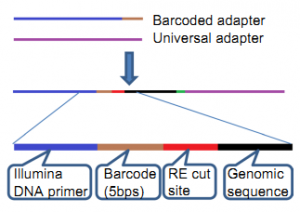|
Brassinosteroids participate in the control of basal and acquired freezing tolerance of plants
Thursday, 2016/10/06 | 08:11:46
|
|
Marina Eremina, Simon J. Unterholzner, Ajith I. Rathnayake, Marcos Castellanos, Mamoona Khan, Karl G. Kugler, Sean T. May, Klaus F. X. Mayer, Wilfried Rozhon, and Brigitte Poppenberger SignificanceCold stress is an influential environmental factor that affects plant distribution and can strongly limit crop productivity. Plants have evolved sophisticated signaling cascades that enable them to withstand chilling or even freezing temperatures. These cascades alter the biochemical composition of cells for protection from damage caused by low-temperature stress. In addition, cold stress has a profound impact on plant morphologies, causing growth repression and reduced yields. In this work we reveal that the brassinosteroids, a class of steroid hormones that is known for its role in growth control, also confers freezing tolerance in plants and describe regulatory circuits that contribute to this activity. Implications for the breeding of cold-resistant plants are discussed. AbstractBrassinosteroids (BRs) are growth-promoting plant hormones that play a role in abiotic stress responses, but molecular modes that enable this activity remain largely unknown. Here we show that BRs participate in the regulation of freezing tolerance. BR signaling-defective mutants of Arabidopsis thaliana were hypersensitive to freezing before and after cold acclimation. The constitutive activation of BR signaling, in contrast, enhanced freezing resistance. Evidence is provided that the BR-controlled basic helix–loop–helix transcription factor CESTA (CES) can contribute to the constitutive expression of the C-REPEAT/DEHYDRATION-RESPONSIVE ELEMENT BINDING FACTOR (CBF) transcriptional regulators that control cold responsive (COR) gene expression. In addition, CBF-independent classes of BR-regulated COR genes are identified that are regulated in a BR- and CES-dependent manner during cold acclimation. A model is presented in which BRs govern different cold-responsive transcriptional cascades through the posttranslational modification of CES and redundantly acting factors. This contributes to the basal resistance against freezing stress, but also to the further improvement of this resistance through cold acclimation.
See http://www.pnas.org/content/113/40/E5982.abstract.html?etoc PNAS October 4 2016; vol.113; no.40: E5982–E5991
Fig. 4. CES and homologs promote acquired freezing tolerance. (A and B) Freezing tolerance of ces-D, tM, and qM plants. Three-week-old plants grown in LD growth conditions at 21 °C were acclimated for 3 d at 4 °C and then treated at −10 °C for 6 h. Survival was scored after 2 wk of recovery at 21 °C. Images of representative plants (A) and quantified results (B) are shown. Error bars show SD of three biological replicates. (C) Electrolyte leakage in detached leaves of acclimated plants of the WT, ces-D, tM, and qM. Plants were grown and acclimated as described in B before electrolyte leakage assays were performed. Error bars show SD of three biological replicates. |
|
|
|
[ Other News ]___________________________________________________
|


 Curently online :
Curently online :
 Total visitors :
Total visitors :
(12).png)



















